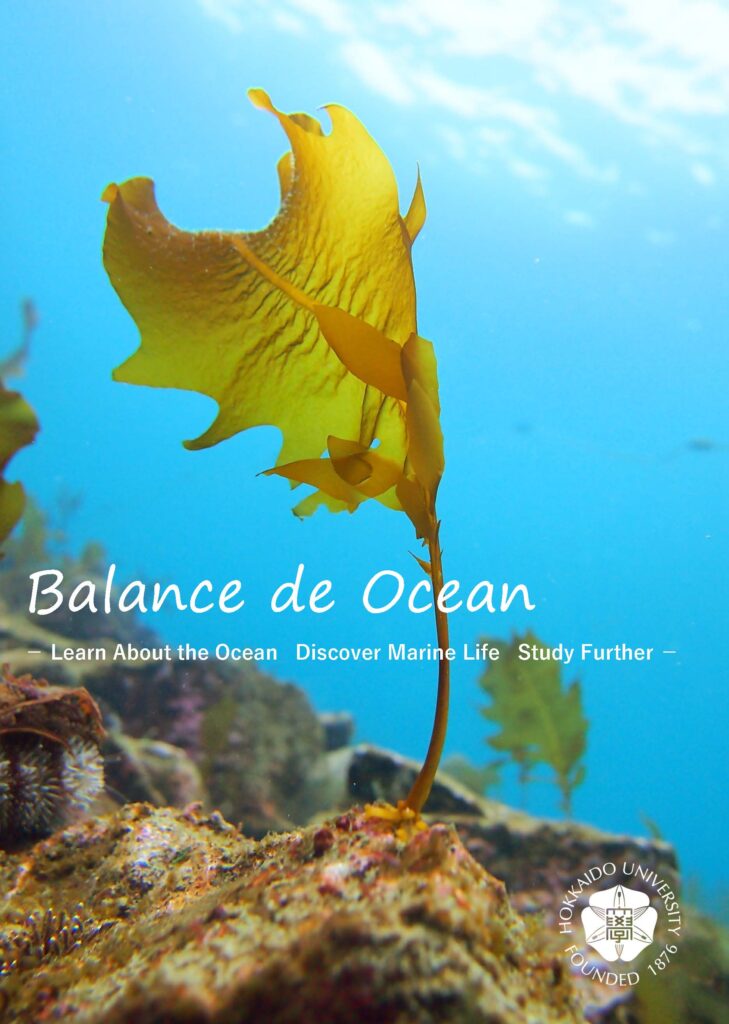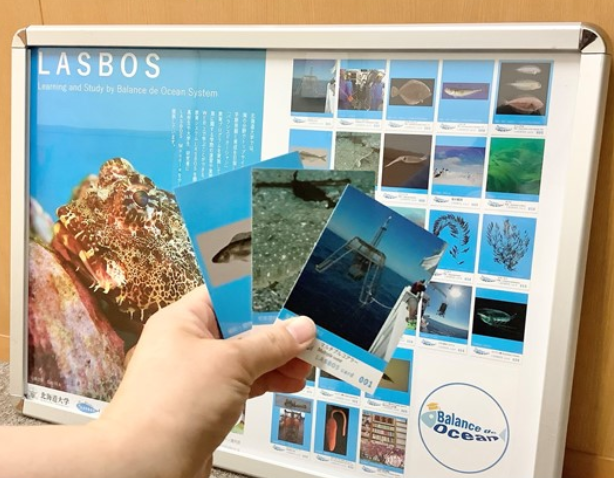Balance de Ocean: A borderless marine learning for all
University News | November 05, 2021
The School of Fisheries Science was founded in 1907 as part of Sapporo Agricultural College (the present-day Hokkaido University), and was the first higher educational institution in Japan offering marine studies. The School has developed into one of the largest fisheries schools in the country, having its own campus in Hakodate, Hokkaido, and operating two major training ships for training and research purposes: Oshoro-maru and Ushio-maru.
The long running history of the School has resulted in a mass of knowledge and materials on marine studies. To disseminate and utilize them for nurturing marine scientists, the educational program Balance de Ocean was established in 2019. Since then, it has compiled those resources into a remote learning platform: “Learning and Study by Balance de Ocean System”, also known as LASBOS. Launched in October 2020, LASBOS utilizes a free source e-learning management system in a Moodle form.
The learning materials are all available from the LASBOS Moodle website. Just like the ocean, the study of marine sciences is vast and endless; therefore, the Moodle categorizes the contents for easier navigation, such as Biodiversity, Chemistry, Arctic Ocean, and SDGs, among many others. Navigating the Moodle in multiple languages other than Japanese is possible by clicking the “For International Users” button on the top of the homepage. The Balance de Ocean team intends to keep on improving its usability for international visitors. At the time of publication of this piece, the Moodle has been accessed from 46 different countries.
LASBOS also utilizes a YouTube channel to distribute the videos. It offers over 300 videos (as of October 2021) featuring research on, for instance, ice sheet observation, squid’s pigments, microplastics, etc., which are packed into short, concise videos. Research topics aside, several videos also offer glimpses of wildlife around the research stations and video tours around the facilities. Around 80% of the uploaded videos already have English subtitles. Some of the titles are also available on the Bilibili video sharing platform in China.
Introduction to LASBOS video (source: Hokkaido University Balance de Ocean YouTube channel)
Another way to access the videos is through the LASBOS card set. Similar to regular flashcards, each piece bears an image and brief information on marine research done by Hokkaido University. Each card possesses a unique QR code which will take people to the video of the corresponding research. This card set is available to collect at Hokkaido University libraries, Hokkaido University Museum, and marine tourist attractions throughout Hokkaido. They are also available on LASBOS Moodle, with English descriptions.
The unlimited access and on-demand format have assisted students and faculty members not only in enriching their knowledge during the Coronavirus pandemic, but also in preparing them for training in post-COVID-19 era. Prospective students — domestic and international — who are interested in joining the School of Fisheries Science, can also find out how to apply to the University and discover the lives inside and around the Hakodate Campus area through the LASBOS Moodle and YouTube channel.
LASBOS provides easy navigations and comprehensive contents for people around the world who are curious and would love to explore the ocean from a variety of perspectives.
Related Links:
LASBOS Moodle: https://repun-app.fish.hokudai.ac.jp/?lang=en
LASBOS YouTube: https://www.youtube.com/channel/UCWo8IebtPw4Kibut-9Rga7w
Written by Aprilia Agatha Gunawan


